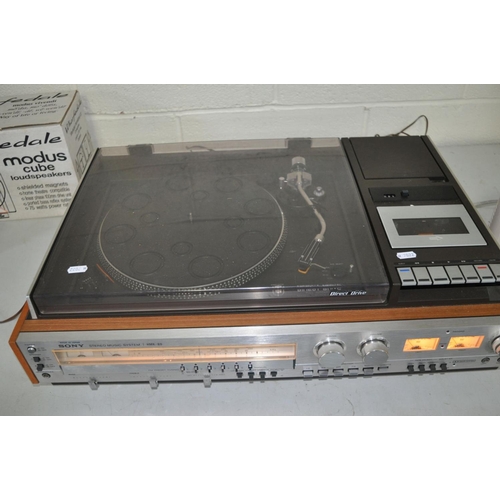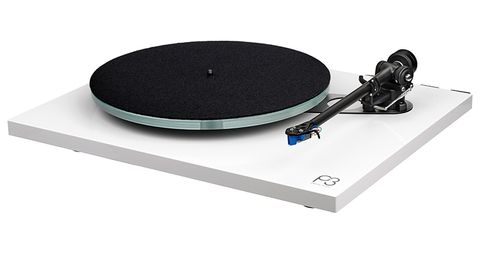Every self-respecting mass manufacturer offered the same thing in a single package during the hi-fi boom of the 1970s, when every lifestyle magazine was advising people to buy enormous, bulky stereo separates. It was known as a music center, and the breed was mocked a little because there were some rather rudimentary items for sale with the same name. However, the big hi-fi manufacturers, particularly Sony, took the genre very seriously at the time, as it was on a quest to outperform every other manufacturer in every aspect!
The HMK-80 was the company’s top-of-the-line music center, costing a whopping £445 in 1978. To put that in context, that was twice the price of a Linn LP12 turntable and half the price of a brand new British Leyland Mini 850 basic model. Then it’s not cheap. Oh, and Sony threw the kitchen sink at it as a kind of retaliation. Even more, this didn’t imply that it was a shoddy design rife with gimmicks and frills; rather, the business engineered it properly and constructed it (in Japan) elegantly.
The HMK-80 has a direct drive turntable, which sets it different from almost every other music center ever produced, and certainly all other Sonys. It is powered by a large brushless, slotless motor designed by Sony and features fine speed adjustments and an illuminated stroboscope. Seeing this light up, as well as the chunky strobe marks carved into the aluminium platter, confirmed the Sony’s status as music center royalty. Thanks to servo control connected to a magnetic pickup directly behind the platter’s rim, the speed was extremely stable. The deck’s main chassis is pressed steel, with a vintage S-shaped tonearm, replaceable magnesium headshell, and Sony VL-34G moving magnet cartridge — which was a step up over the basic Shures of the time but nothing special.
In addition to the normal FM, MW, and LW bands, the HMK-80 also offered Short Wave radio. SW wasn’t particularly useful in Western Europe in the late 1970s, unless you wanted to listen to Radio Moscow’s tractor production figures reports. It was more about bragging rights than anything else, in fact. Still, the built-in tuner functioned well and came with a signal strength meter; it was quite sensitive, and five FM presets, which were exotic at the time but are now commonplace, added to its high position in life.
The accompanying cassette deck is an excellent quality unit with belt drive, a solid (though slightly soft) permalloy head, and a feedback regulated DC servo motor of Sony’s own design, and would have spent a lot of time recording from the radio. It had manual (rather than automatic) changeable recording levels, which wasn’t common at the time, and a pair of VU meters that were small by hi-fi standards but better than most other music centers. In addition to Cro2 and normal tape biassing and EQ, it had Sony’s famous FerriChrome compatibility and a peak level LED, which was rarely found on most cassette decks, let alone music centers. It was capable of outstanding recordings for a music center when using the usual Dolby B noise reduction with Sony FeCr tape and the levels properly calibrated, however Nakamichis didn’t have to bother.
The amplifier portion, which was designed around a specially selected low noise bi-polar op-amp and pumped out 2x35W RMS per channel, was likewise of unusually high quality for a music center. Back in the day, a music center could only muster 20W at best, so this was a huge deal. It’s powered by split rails and so DC linked throughout, indicating that it’s a serious, modern hi-fi design. It had a decent quality MM phono input for the built-in turntable, as well as an additional tape monitor loop, allowing it to be utilized with a three-head cassette or open reel tape deck.
The HMK-80 performs admirably acoustically – especially for a music center. It won’t be able to compete with your modern high-end separates system in your primary listening area, but it was amazing back in the day, providing a powerful, clean, and consistent sound. Tonally, it’s a little lean, as was the custom with Japanese items at the time, but it’s never boring to listen to, and you don’t get the impression that it’s in any way compromised. It’s a fantastic little oddity, or rather, a gigantic curio, because it’s enormous for a music center and incredibly hefty at over 20kg. It’s a pleasant remembrance of how we used to live, and it still makes sense as a backup system if you put in a DAC instead of a tape recorder!







